#6. Advances in Low-flow Anesthesia | ANESTHESIOLOGY® 2022
-
John "JW" Beard, MD, MBAImage

-
Eric RuedingerImage
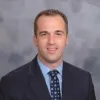
-
Guy DearImage

-
Desiree ChappellImage

-
Prof. Monty MythenImage
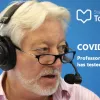
In this podcast, John "JW" Beard, Chief Medical Officer of GE Patient Care solutions, GE Healthcare, Eric Ruedinger, General Manager for Anesthesia and Respiratory Care, Patient Care Solutions, GE Healthcare and Guy Dear, Pediatric Anesthesiologist at Duke University Hospital discuss advances in low-flow anesthesia.
Show Notes
Transcript
Speakers
In this podcast, John "JW" Beard, Chief Medical Officer of GE Patient Care solutions, GE Healthcare, Eric Ruedinger, General Manager for Anesthesia and Respiratory Care, Patient Care Solutions, GE Healthcare and Guy Dear, Pediatric Anesthesiologist at Duke University Hospital discuss advances in low-flow anesthesia.
This podcast was recorded by TopMedTalk in Anesthesiology 2022 in New Orleans, Louisiana. Listen to the podcast in the TopMedTalk platform here.
Et Control in the USA is approved for patients 18 years of age and older.
TopMedTalk
Desiree Chappell: Well, hello it's anesthesiology 2022 here in New Orleans, Louisiana. TopMedTalk is here in the exhibit hall at Booth 2245, excited to be here. Another buzzing exhibit hall, I'm Desiree Chappell, I'll be your host today and I'm joined by my co-host Professor Monty Mythen. Hello Monty.
Monty Mythen: Great to be here, Desiree. Just reflecting on where we were for our first ASA.
Desiree Chappell: Yeah? Was there? I was-I wasn't there. Thanks.
Monty Mythen: I couldn't remember what happened. So that must have been, that must have been Boston.
Desiree Chappell: Cause I wasn't here to remind you. It was Boston, yeah.
Monty Mythen: So welcome, Desiree, to TopMedTalk
Desiree Chappell: Thank you Monty.
Monty Mythen: So, you've been with us. That must've been, you've been with us for 4 years and 364 days or something?
Desiree Chappell: That is correct, but five years at the ASA, every meeting that they've had,
Monty Mythen: Yep, Yep, yep.
Desiree Chappell: We´ve been here, haven't we?
Monty Mythen: Absolutely, including when we work here.
Desiree Chappell: It, yeah, that's right, we work on here. Well Monty, this is an amazing booth, isn´t it? This is the evolution of where we've been. I think we started on the corner.
Monty Mythen: We did. We had our very own table. And that seemed to work OK. Need to evolve through some lovely boots over time, but this is the pinnacle. We've reached the pinnacle. So, we've reached the pinnacle for now, until.
Desiree Chappell: It is, yeah.
Monty Mythen: More to come.
Desiree Chappell: There's always more to when
Monty Mythen: There is more to come.
Desiree Chappell: But we do want to thank the American Society of Anesthesiologists for supporting us to be here and the generosity of providing us this space, it's absolutely amazing. The live stream as well, so you may be watching at home if you're not, you're listening to this over the next couple of days we actually are live streaming this entire event its live.topmedtalk.com.
Check it out if you're listening, you can find all of our conversations that we are having throughout the meeting, the schedule is there. If you missed anything, you see the schedule and you missed it, you can go to live.ebpom.org. That is EBPOM, E-B-P-O-M, which is evidence based perioperative medicine. Tell us just a little bit about that real quick Monty.
Monty Mythen: 25 plus years ago after I came back from Duke, which we'll talk about in a moment, to return to the UK to take up my position at University College London. I was hearing about this perioperative medicine thing, and we decided that it was the future. So, we set up this conversation about evidence based perioperative medicine, that turned into a meeting, first in Ireland and then in London. And from then, 25 years later it's lived on EBPOM as a global presence. We had meetings around the World: London, Ireland, USA. Singapore is coming up, in December, if you want to go to Singapore up on Asia Pacific.
Desiree Chappell: Right, very good. You can find that there, you can find all of our previous conversations which we have worked, with our next speakers GE Healthcare, in the past. You can find those sat topmedtalk.com, so do check that out. But without further ado, we definitely want to get into our conversations today and is with my great pleasure that we introduce our guests. We have doctor JW Beard, Eric Ruedinger and Doctor Guy Dear. Gentlemen, thank you so much for joining us. Now, JW, we want to start with you first. Tell us just a little bit more about yourself.
JW: So, I'm an anesthesiologist. I'm the Chief Medical Officer of GE Patient Care Solutions, which is one of the businesses that exists in GE Healthcare. We are the acute care business, essentially. We're providing technologies that are used predominantly in hospitalized patients today. That includes anesthesia delivery, patient monitoring, diagnostic cardiology, maternal infant care, some digital health products. And it's for our anesthesia business that I'm here supporting GE this weekend.
Desiree Chappell: Yeah, we see GE, they're very prominent.
JW: Yep, yep.
Desiree Chappell: That's great, so it's beautiful.
Monty Mythen: One of our biggest sponsors.
Desiree Chappell: They are wonderful sponsor.
JW: Thank you so much, absolutely.
Desiree Chappell: Thank you so much for all the generosity that you guys have shown us over the years, for sure. Now, Eric, why don't you Get introduced yourself?
Eric Ruedinger: Sure, I am Eric Ruedinger, I work closely with JW. I'm the general manager for Anesthesia and respiratory care within the Patient Care Solutions business of GE. So, I've been in this job for a little over a year, so relatively new to acute care and anesthesia.
Desiree Chappell: OK.
Eric Ruedinger: Spent some time in cardiology before then.
Desiree Chappell: Oh, really good.
Eric Ruedinger: But thanks for having us.
Desiree Chappell: OK, well actually what I have to highlight for Eric is not only the wonderful conversation that I'm sure we're about to have, but you gotta show
Eric Ruedinger: Oh, the shoes.
Monty Mythen: GE Healthcare
Eric Ruedinger: Yeah, you know we're
Monty Mythen: Is that what chucks is?
Eric Ruedinger: We're in the process of spinning out as a public company
Desiree Chappell: Is it a converse?
Eric Ruedinger: so, these are just a subtle little nod to the compassion purple that will be GE Healthcare going forward.
Monty Mythen: So yes, stuff about GE Healthcare.
Desiree Chappell: OK, I'm going. Okay, I am going to tell you, if you want to win me over forever
Eric Ruedinger: Up here, let's look size, what size?
Desiree Chappell: I can't tell you on camera. Are you kidding me?
Monty Mythen: She signed the contracts.
Eric Ruedinger: We'll work that out later, no problem.
Desiree Chappell: Thank you. And our last guest I want to make sure we have a chance to talk to: Doctor Guy Dear. Thank you so much for joining us.
Guy Dear: You're welcome. So, I go a long way back with the gentleman to my left. About 1/4 of a century. Actually, I think. I'm a pediatric anesthesiologist at Duke, but you can probably tell by my accent that I´ve been trained in the UK. I'm at Saint Georges and Great Ormond St Children Hospital and then came over to Duke and I've been there for a long time but was excited to work with GE on the project looking at End-tidal Control, which we'll get to talk about in a minute.
Desiree Chappell: Sure, yeah, absolutely.
Monty Mythen: So, guys, we're going to talk about low-flow anesthesia, I think. It´s part of what we´re going to discuss.
Guy Dear: Yes
Monty Mythen: Which immediately brings me back to the old hospitals, in central London. We worked at different ones, but they were pretty much all the same. And you know they're giving volatile anesthetics, rotameters, and high flow anesthesia, so the gases were turned up high to try to keep the patient safe. The vapors were flowing at that stage where they were escaping into the environment. We are breeding them in as well, which wasn't very good for us. And eventually those things got better and better and we started to work out ways of taking the carbon dioxide out of the circuit and the flows we thought could go lower and lower. And certainly, in our department or every department I worked in, there was one enthusiast, usually, for low-flow anesthesia and they stayed through the whole of their case, and they said if I can get the knobs right down Right?
Monty Mythen: to a level, I can absorb the carbon dioxide. I just have to give enough oxygen that matches the oxygen consumption, and I can get down to a few 100 mills and we can go in and say that's great. Not giving any names away. John, if you're watching great job, that's really fantastic. I'm going back into my room and turning them back up because that's just too hard. Is that the world that you grew up in as well?
Guy Dear: I definitely remember that scenario absolutely, and there was always one or two people doing this crazy stuff and it seemed to be too much on the edge and yeah.
Monty Mythen: Just too two scary. And then suddenly, it happened earlier in the UK, then it happened in the USA. These new anesthetic machines arrived, and you said I want the oxygen level to be that, and I want the vapor level coming out of the patient to be that. And it just happened. Now the younger people who've trained in Europe don't know that that there's a different way of doing it, but I'm thinking this is just more recently happening in the USA, is that right?
Guy Dear: It's really just in a brand-new concept, and then we're kind of excited that it's finally here. Uhm, again, talking to colleagues in other countries, we have good experience looking at these devices, but now it's finally available in the US.
Monty Mythen: It´s great. It's so brilliant that that, as I say, we grew up through it, so you know, in the same way that we didn't have mobile phones and the Internet and things like that the youngsters in Europe have thought this is just normal.
Guy Dear: Right, yeah?
Monty Mythen: You hit the two buttons, so they say that's not exciting, right? You know it is exciting if it's new to you. Yeah, and it makes life easy, it's great for the patient and you can get the depth of anesthesia right.
And really importantly, it's good for the environment, is a is a factor that we're discussing there. So please tell us more about that, I've done a lot of talking, that's one of my problems.
Desiree Chappell: Yeah, well I was going to ask JW to walk us through a little bit about low-flow. I mean, I know they went through that, but you know, from what we've been seeing in the past, and maybe you know where we're going.
JW: Yeah, so I think, to start, low-flow I think has historically had many different definitions.
Desiree Chappell: Yeah, so that's just like.
JW: There may be definitions based upon the percentage of the patient’s minute ventilation.
Desiree Chappell: What does that actually mean? Yeah, yeah.
JW: Or is it a percent of rebreathe gas that would define low-flow? Or is it specific volume flow threshold, like less than a liter per minute? Or is it something that's more physiologic? Like low-flow is providing the amount of oxygen that patient is requiring metabolically per minute. And I think where it sorts out is probably going to be along the lines is recently discussed in the APSF newsletter. It's kind of a toward kind of getting towards that physiologic match but making sure it's within the providers level of comfort. In terms of where they're comfortable with the with the flows being set. Like the challenge with low-flow is that it does require significant amount of vigilance compared to the traditional free gas flow methods of really just putting in a ton of gas and not needing to adjust those flows over time.
Desiree Chappell: But really with low
JW: flow outside of an automated system, it does require constant vigilance to your oxygenation and your vapor levels, because the inhaled anesthetic uptake changes throughout the course of the case.
Desiree Chappell: OK very interesting. So, I was trying to break down in my mind like, you know, as an anesthesia provider go in like mindset, turn you know, turn the gases on, crank it up and you're just set for the entire case, not like that.
Monty Mythen: So, for everyone who's not in this or didn't live in that world, let’s just concentrate in the oxygen for a second.
Desiree Chappell: I´d day turn the Oxygen on
Monty Mythen: Imagine said it's only option up a nice high number, to say that's a nice high number.
Desiree Chappell: 2 liters, 3 liters, yeah.
Monty Mythen: In fact, the patient consumes maybe 250 mils. Let's imagine a 70-kilogram person per minute. Everything that isn't that 250 mils is gone. So that's a waste component. Coming out the gas is carbon dioxide. So, if you can put it into it, which we've been able to do for centuries now, if you put it into a closed system with a carbon dioxide absorber in it, you can reduce the flows down and down and down and down. But before you computerize that and automate that and get some smarts in it, it's potentially more dangerous game because you're close to the edge. You've solved all of that. Now I'm guessing that's why we're here.
JW: Yeah, I think that that it's not just, you know, kind of the observations from the clinical trial that that guy and his colleagues lead, but it's part of the evidence that's been published from international locations where this type of technology is available, and it does an excellent job and outstanding job of attaining and maintaining this set, anesthetic and oxygenation targets, and if you think about the beginning of a case, for example, maybe the busiest time for the anesthesiologist, the anesthesia professional.
The patient´s airways is secured, and now that person who may be alone, is expected to get another line in, help position that patient etc. The whole time, while the patient’s volatile anesthetic uptake is at its maximum yeah, and so you end up with kind of a higher flow, a higher administration level of anesthetic. Next thing you know, 10 minutes later, you've got your line in and you turn around and that patient is hypotensive. Because at that point, the anesthetic levels are a bit higher than you wanted.
They've got out of your hands at that point, and you know, technology of end-tidal control enables the anesthesia provider to set that level. So, for example, one Mac or whatever inhaled agent you're using, and then you can get to work on things and the machine will keep that patient at one Mac based on that end-tidal level.
Monty Mythen: Autopilot, fly by wire. I'm sailing my ship, I need to do whatever, hit Autopilot, hold the course. I'm flying the plane, I need to do whatever, hit autopilot, I maintain the course. Beautiful.
Desiree Chappell: So, like as you induced your patient, you know you're going to have a little hypertension sometimes we don't crank, you know you don't turn the gas on, or you turn a little bit lower and hoping that it can come on a little bit more slowly. Is that all automated in this as well? Like in the rate of obtaining that Mac.
JW: Yeah, and Guy would be interesting here because of your experience. At this point, cause the induction period there is a lot of change that goes on an induction. Certainly, technology like end-tidal control clearly does an amazing job during maintenance, but I also think it has applicability during induction. Guy, do you recall how you use it to an induction?
Guy Dear: I think it's both induction and emergence, so obviously we'd like the patient to wake up swiftly and safely in the end, so it does help dramatically with purging vapor
Desiree Chappell: Yeah, OK.
Guy Dear: and getting oxygen safe. But at the beginning, the provider can set the levels that you think are appropriate. The device will get to that setpoint within about 90 seconds, very quickly, and then ramp down so the flows will drop, and the agent will drop automatically, and we'll get to the new set point. We talked about a high flow during induction, that's obviously sensible. We want to get the number of molecules of inhaled agent into the patient, but once we've got there, we don't want to overdo it, right? The flows will cut down to the basal level, which might be .3 or .5 liters per minute, and we're now cruising at a safe and controlled fashion and not much is going out of the door.
Desiree Chappell: That is incredible. I mean, as a clinician who struggles with that every, you know, every case. Thinking, you know, that you can have something that you do, cause I mean there is a time period of right after reduction you're already worried about that, you don't necessarily want to, you know, dose them up with vasopressors until you know what the blood pressure might be. I mean, there's a lot of things that we can unpack on that, that's really, really interesting. Did we, did we mention that there was a study that you did? Can you walk us through a little bit about that?
Guy Dear: Right, so this is a multicenter study and four different institutions, and we had patients who either use the new device or just kind of standard anesthesia practice and we compared and contrasted how they, how they got on. The interesting thing was that with all of the patients who using the new device, got to their set points very quickly, with not much overshoot and basically tracked along exactly the concentrations that were desired. So, we looked at that and comparing it with the manual practice, which to be honest, was not that great. When you watch what people actually do in the OR they're either fiddling around trying to control it manually, not doing a terribly good job, or perhaps being busy doing other things, not having time to adjust it, and we found that the manual control was really fairly poor, whereas the automated device was amazingly accurate all the way through.
Guy Dear: Whether it was going up in concentrations at the beginning of the case, changes in the middle when more stimulation perhaps or then, particularly at the end when you want to come down on your agent, it would get rid of the agent very rapidly.
Monty Mythen: So, it's not undermining the clinician, it's enabling the clinician, so you choose the.
Guy Dear: You choose the concentrations, yes.
Monty Mythen: Targets, yeah.
Guy Dear: And that, to me, that was the beauty of it. That it enhanced our ability to get to the set points that we desired rather than hunting around trying to pick a place to go.
Desiree Chappell: That's interesting. So, question: you just mentioned that you would have these crazy people come in and change all your flows and then you change them back as soon as you came in. What is the adoption like? When did, you know, your colleagues and the participants in this study kind of talk about that? Was that one of those moments? Or was it like wow, this is actually really useful?
Guy Dear: I mean, we had a lot of comments and we asked people to be free and honest about what they thought and the vast majority, I think it was about 90% of people said they really, really liked it. And one comment sticks in my mind which is set it and forget it. And that to me is really helpful, because I know, and I have confidence that when I choose that concentration it's going to get me there and it's going to stay there, and I don't have to worry about changes.
Eric Ruedinger: Just, also, just if you think about the experience outside the United States to obviously there's been
Monty Mythen: There was high level. How long have you had it from the UK?
Eric Ruedinger: Uh, we will talk slightly more than 10 years, since 2011 or 2012.
Monty Mythen: I don´t think anyone does it the other way now.
Eric Ruedinger: Yeah, that's right that was that was my point.
Monty Mythen: So that's you know, that's kind of.
Guy Dear: Why would you?
Eric Ruedinger: Like almost 100, it's almost 100% adoption, so it's like standard of care in Europe.
Desiree Chappell: OK. And that was that, was that, uh, widespread adoption pretty quickly? Yeah? I was like, wow, this is a game changer.
Eric Ruedinger: Yeah, part of the part of the reason there was a delay of a decade between Europe and here in the United States is, so the end-tidal control software is a Class 3 medical device.
Desiree Chappell: Yeah, yeah.
Eric Ruedinger: And so, the clinical studies Doctor Dear was referring to, you know, we're ultimately tied to the PMA process. So, you know, a lot of credit goes to Doctor Dear and the other centers in this study, you know, remaining persistent in the process of demonstrating to FDA that this thing that was out there in Europe as standard of care, you know, met the thresholds in this country for us to be able to bring the technology market here as well.
Desiree Chappell: Remind me again, when did this technology get approved? It's been around here in the year.
Eric Ruedinger: I think the spring, so late March
Desiree Chappell: Oh, this year.
Eric Ruedinger: Into the first quarter of this year.
Desiree Chappell: OK, alright that's really interesting because, you know, I would love to know like where it is right now, and it you know what's the penetration. I know as we're, you know, going beyond and looking at anesthesia machines and things like that, you know, the options that we have, there's a lot of options out there. It sounds like kind of a bit of a game changer for you guys.
Eric Ruedinger: Yeah, we definitely think so. We're really early in the in the launch process if that makes sense. So obviously if you if you could come over and visit our booth you could see you can see T control in action, we have like live agent over there so you can
Desiree Chappell: Cool, we'll do that.
Eric Ruedinger: you could see it in real life, but you know we'll get to begin the commercial rollout of this here in the last, you know, couple of months and we'll see that really gain traction, we think over the course of the next year or so.
Desiree Chappell: Yeah, fantastic. Any other points that you guys wanted to share with you about that tech, new technology.
JW: Yeah, I mean I would just my initial reaction to seeing it in a simulated environment, was like: that's it? Like I heard about it. Like Oh my gosh, like, we're finally going to have this in the United States. And it is the technology underpinnings of it, are so robust and performs so well. But the anesthesia providers end of it really is just establishing target to the end-tidal anesthetic, targets for the end-tidal oxygenation and then going about your business and doing the other parts of patient care that doesn't add a technology burden to the anesthesia provider. And by removing those repetitive manual tasks associated with delivering low-flow anesthesia, it it's really, it's remarkable. And I think there was a question about the environment earlier.
Desiree Chappell: Yeah, I was gonna mention. The value proposition here, regarding the environment.
JW: Yeah, so it facilitates low-flow anesthesia and lower inhaled anesthetic use. So, there's less waste cause.
Monty Mythen: Because you recycle the agent as well, you don't waste.
JW: That's exactly right, so there's and inhaled anesthetics or potent greenhouse gases. And there have been there have been some studies that estimate the carbon footprint that comes from anesthesia delivery within health systems. I believe there's some data from NHS actually, which attributes a substantial portion of their greenhouse gas emissions to anesthetics. So, it's by supporting low-flow and reducing anesthetic waste, it has that favorable environmental impact and then you know lower anesthetic uses lower costs as well.
Monty Mythen: and Guy, is this study published now or is it pre-publication?
Guy Dear: Well, we have a poster presentation at the ASA today and we're having a slide presentation tomorrow, so it will be published and we're looking to write this up more formally for a journal submission in the near future.
Monty Mythen: Choose, choose well.
Desiree Chappell: Yes, yeah.
Guy Dear: Watch the slides tomorrow.
Monty Mythen: We're looking forward to it.
Desiree Chappell: Yeah, so just wrapping up guys value proposition of this new technology. The technology is end-tidal control. Say it for me one more time here.
Eric Ruedinger: End-tidal control software.
Desiree Chappell: End-tidal control software, that's right. And value proposition for that, definitely ease of use for providers, I think that's a push it., set it and forget it, greenhouse gases, and I would assume patient safety.
Eric Ruedinger: Oh yeah, of course. Yeah, you guys should speak about that.
Desiree Chappell: Yeah, doctor Dear.
Guy Dear: I mean, I think the ability to have this device helping you get to those set points quickly and safely definitely makes the provider more confident that what they deliver is what they want and what will be appropriate for the patient, and it changes very fast, which is also fabulous.
Desiree Chappell: Yeah, absolutely gentlemen, it has been a pleasure. Thank you so much for sitting down with us on TopMedTalk about this really cool new interesting technology and thank you for wearing the shoes, Eric.
Eric Ruedinger: And we'll figure that out.
Monty Mythen: So, GE Healthcare. Yeah, yeah, it's all about. Just notice that they didn't touch on it, just a little bit before you. It's a new thing. Well, independent company, go ahead.
Eric Ruedinger: So, GE announced a while ago that that it's splitting into three separate businesses. So, GE Healthcare will be the first of the GE businesses to ultimately go out on its own. So, we said a few weeks ago that that'll happen in the very early part of 2023, so we'll keep the name, slightly different font, new color Capital C for Care. and so, we're excited about It will be, you know.
Desiree Chappell: Congratulations.
Eric Ruedinger: Obviously we're very focused on innovation and doing that as a standalone company will be exciting for all of us.
JW: Focus on patients, focus on clinicians and technology to meet their needs.
Desiree Chappell: Yep, very, very good if you're interested in more conversations that we've had GE with some of the new technology that you guys have been doing and more further to this conversation, do check us out at topmedtalk.com. We have those from this past summer when we are at ESA and lots of really great conversations throughout the last year. So do check that out.
TopMedTalk
Desiree Chappell: You check us out for a live stream from Anesthesiology 2022 live.topmedtalk.com. You can hear all our amazing conversations live during anesthesiology 2022. You can find the schedule for all of those at live.topmedtalk.com. Cheers.
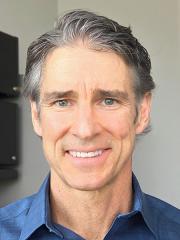
John "JW" Beard, MD, MBA
John “JW” Beard, MD, APSF board Member and Chief Medical Officer of GE HealthCare – Patient Care Solutions. Prior to entering the medical industry, Dr. Beard was in clinical practice for fifteen years as an anesthesiologist. While in clinical practice, Dr. Beard led multiple quality improvement initiatives and held leadership positions including Chairman and Medical Director of the Department of Anesthesia.
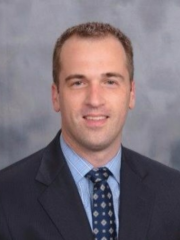
Eric Ruedinger
General Manager for Anesthesia and Respiratory Care, Patient Care Solutions, GE Healthcare
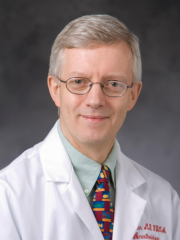
Guy Dear
Dr. Guy D. Dear is an anesthesiologist in Durham, North Carolina and is affiliated with Duke University Hospital. He received his medical degree from School of Clinical Medicine, University of Cambridge and has been in practice for more than 20 years
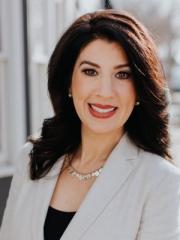
Desiree Chappell
MOM, CRNA and Host of The Roundtable Blog
Board of Directors, American Society of Enhanced Recovery (ASER). A passionate ambassador of Enhanced Recovery and Perioperative Care. Desiree is the creator of the popular Roundtable perioperative care blog: http://periopcareblog.com/
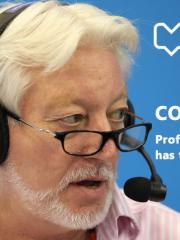
Prof. Monty Mythen
Co Founder and Editor In Chief of TopMedTalk
Monty is the Smiths Medical Professor of Anaesthesia and Critical Care at University College London and Adjunct Professor, Department of Anaesthesiology, Duke University, USA. Monty is also the founding Director of Evidence Based Perioperative Medicine International.













